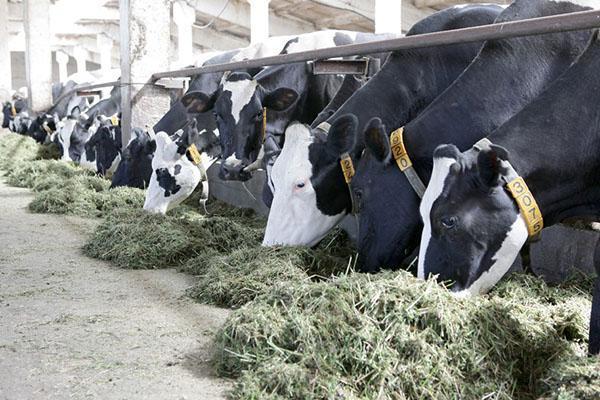Dairy farming on an industrial scale
 Dairy farming includes milk production and processing. The highest quality cow's milk is used for the production of so-called "fresh" cheeses, for example:
Dairy farming includes milk production and processing. The highest quality cow's milk is used for the production of so-called "fresh" cheeses, for example:
- mascarpone;
- feta;
- ricotta;
- Mozzarella.
In order to obtain milk that is suitable for the production of such cheeses, a number of factors must be taken into account.
Breed of cow
First of all, it is worth choosing a breed of cows. The most promising are the Dutch breeds of cows. Cattle from this region have good genetic potential. Dutch record-breaking cows yield up to 100 tons of milk in their entire life. High milkiness is the result of a combination of several factors:
- good genetics;
- correctly composed food supply;
- having a feeding program.
To obtain high quality milk, you need to monitor the health and hygiene of the cows.
It is important to remember that Dutch and other European breeds do not tolerate the Russian climate well, therefore many large industrial enterprises raise their own young animals, zoning the breeds. If you do not carry out work on the acclimatization of cows, in the first year, the death of animals can amount to 30% of the total livestock.
Compilation of a forage base and a nutrition program for cows
After birth and before one month of age calf enters the "colostrum period". In the first three hours of life, the calf should be given colostrum. Then the animal's immune system will begin to form.
At the age of one month, the calf begins its "milk" period. At this time, together with milk, young animals are given prelaunch compound feed. You can also use “calf milk”, a milk replacer.
Stretching the stomach in the first months of life is the main task of dairy farming, because the larger the stomach volume of a cow, the more feed it consumes and, accordingly, gives more milk.
Pre-start feed builds the calf's immunity and helps to stretch the stomach. At three months of age, calves are given starter feed, which helps to increase muscle mass.
At the age of 1.5 years, the calf is transferred to feed with an additive that stimulates hunting in cows. The first coating occurs at the age of two years with an animal weight of 320 kg.
After calving, cows are transferred to the "dry period" in order to obtain the maximum amount of milk without harm to animal health. Feed during this period consists of hay and silage.
A premix can be added to the feed mixture, which stimulates the removal of calcium from the animal's body. This premix prevents the formation of contractures of the cow's hip joint and milk loss due to calcium-clogged milk ducts.
The dry period lasts a month. Then the cows are transferred to grain waste and sunflower meal.